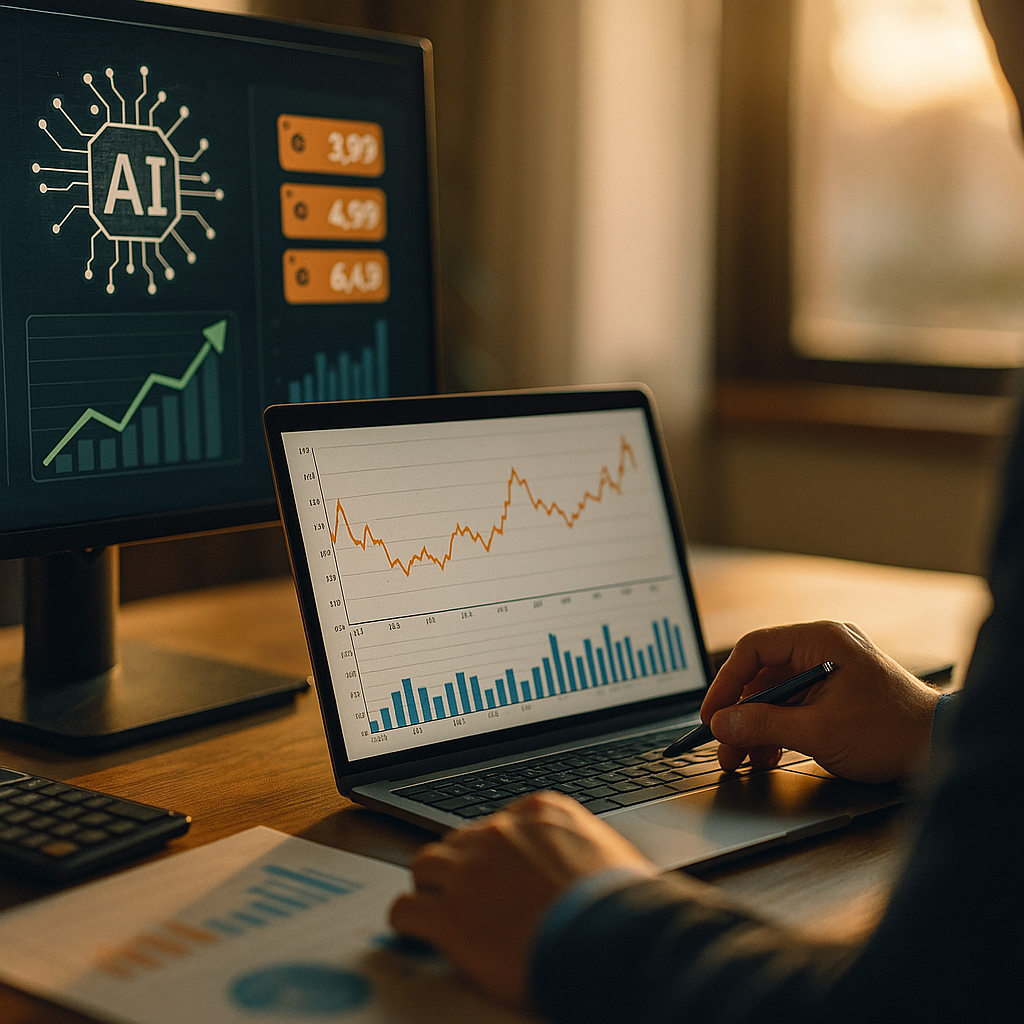Using AI to analyze and optimize your pricing strategy in real-time has swiftly moved from an emerging trend to a must-have advantage for competitive businesses. With today’s digital marketplace demanding agility, organizations cannot rely on outdated, slow-moving pricing models. Let’s explore how modern AI-driven pricing transforms decisions—and delivers results you can measure.
Why AI is Revolutionizing Price Optimization
The importance of staying agile in pricing has never been greater. In 2025, the marketplace is more dynamic, with consumer expectations and competitor moves shifting overnight. AI-powered pricing optimization leverages advanced algorithms to analyze market signals, competitor prices, demand trends, and even customer sentiment—empowering companies to set the right price at the right moment.
- Precision: AI sifts through millions of data points to identify optimal price points tailored to different segments and circumstances.
- Speed: Machine learning enables instant analysis and response, eliminating delays caused by manual reviews.
- Objectivity: Data-driven insights take the guesswork out of pricing, leading to fair, competitive, and profitable decisions.
These factors contribute not only to improved margins but also to enhanced customer satisfaction, because pricing stays relevant and competitive at all times.
How Real-Time Data Fuels Dynamic Price Analysis
One essential secondary keyword is real-time data analysis. AI platforms ingest and process real-time feeds from multiple sources—think sales, inventory, competitor activity, seasonal factors, and even global events. This extreme responsiveness means pricing decisions align as conditions shift, rather than lagging behind.
- Monitor competitor prices hourly to avoid being undercut.
- Track sales velocity to identify fast-moving or stagnant products in real time.
- Analyze social media sentiment and reviews to preemptively adjust pricing based on demand swings.
By harnessing these data streams, organizations can both maximize revenue and retain price-conscious customers who shop around with ever-increasing transparency.
Optimizing Pricing with Machine Learning Algorithms
At the heart of advanced dynamic pricing optimization are machine learning models that adapt and learn continuously. These models factor in variables like previous sales, customer behavior, market elasticity, and external events. The benefits of machine learning in pricing include:
- Predictive accuracy: Algorithms forecast demand and suggest price adjustments before trends fully emerge.
- Segmentation: Personalized pricing strategies for varied customer groups, regions, or purchase channels.
- Scenario testing: Rapid “what-if” analyses to simulate the impact of potential price changes in a risk-free environment.
For example, a retailer in 2025 can use AI to recognize when a product is trending due to a social media event—and instantly raise or lower prices to capture opportunity or mitigate risk, all within minutes not days.
Bridging Human Expertise and Automated Decision-Making
Despite its strengths, AI-driven pricing strategy is most effective when paired with human oversight and industry expertise. Businesses thrive when they:
- Set guardrails: Establish minimum and maximum prices to uphold brand integrity and legal compliance.
- Review AI recommendations: Manual review ensures contextual understanding for promotions, new product launches, or special circumstances.
- Incorporate qualitative insights: Human teams can factor in unique events AI may miss, such as sudden competitor exits or unexpected supply constraints.
This blend ensures pricing is not just optimized by the numbers, but also aligns with broader business goals and ethical standards—balancing profit, perception, and customer trust.
Measuring Success: From KPIs to Continuous Improvement
Effectively measuring AI pricing performance is critical to long-term improvement. The impact of AI-driven pricing can be tracked across multiple metrics:
- Revenue and profit margin growth: Compare before-and-after numbers to quantify gains.
- Conversion rates: Monitor if price changes correlate with higher sales or reduce cart abandonment.
- Price elasticity: Analyze how price adjustments affect demand and customer retention.
- Competitive position: Use pricing data to ensure market share is either maintained or increased.
Continuous learning is central: machine learning models should be retrained regularly with new data to avoid stagnation, and human teams must provide periodic feedback for further refinement.
Future-Proofing Your Strategy with Responsible AI
As technology evolves, ethical considerations become increasingly crucial. A responsible real-time pricing strategy in 2025 involves transparency and fairness for customers, and compliance for brands. Key principles include:
- Bias detection: Regularly audit algorithms to prevent discriminatory pricing based on location, demographics or behavior.
- Transparency: Communicate pricing rationale to customers to build trust and avoid backlash.
- Privacy: Protect customer data while using behavioral analytics for price optimization.
Businesses that invest in robust governance, clear ethical frameworks, and customer-centric policies are best positioned to benefit from AI-powered, real-time pricing without reputational or regulatory risks.
AI-driven analysis and optimization of your pricing strategy in real time offers unprecedented advantages in efficiency, competitiveness, and profitability. By integrating smart technology with human judgment and ethical practice, you ensure your pricing is always a strength—not a liability.
FAQs: Using AI to Analyze and Optimize Your Pricing Strategy in Real Time
-
What types of businesses benefit most from AI-driven pricing optimization?
Any business with a dynamic and competitive marketplace—such as retail, travel, e-commerce, or subscription services—will benefit. Companies with large, diverse inventories and fluctuating customer demand find especially strong ROI. -
How quickly can AI adjust prices in real time?
Modern AI systems can analyze data and update prices within minutes, or even seconds, depending on system integration and business rules. -
Does using AI for pricing eliminate the need for human oversight?
No. Human oversight remains crucial for contextual understanding, strategic alignment, and ethical considerations. The best results come from combining AI efficiency with human experience. -
What data is essential for effective AI-driven pricing?
Key data includes historical sales, competitor prices, inventory levels, customer behavior analytics, and external factors like trends or events affecting demand. -
How do you ensure AI pricing remains fair?
Routine algorithm audits, transparent pricing communications, and adherence to regulations help ensure fairness, prevent bias, and maintain customer trust.
